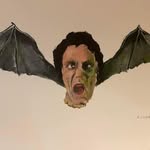Whispers in the Attic: Black Christmas (1974)



Before Halloween, before Friday the 13th, there was Black Christmas. Directed by Bob Clark (yes, the same guy who made A Christmas Story), this 1974 proto-slasher is a masterclass in dread. It’s quiet, cold, and deeply unsettling—like a scream muffled by falling snow.
Set in a sorority house during winter break, the film follows a group of women who receive obscene phone calls from a voice that shifts between sobbing, screaming, and whispering. As the bodies pile up, the killer remains unseen—his presence felt only through the camera’s eye and the sound of his breath.
Frostbitten Facts
- 📞 The phone calls were voiced by multiple actors: Including director Bob Clark himself, to create the layered, chaotic effect.
- 🧠 Inspired by real crimes: Roy Moore based the script loosely on the “Babysitter and the Man Upstairs” urban legend and a series of murders in Quebec.
- 🎬 Bob Clark used long takes and minimal score: Creating a sense of realism and unease that influenced John Carpenter’s Halloween.
- 🧥 Margot Kidder improvised much of her dialogue: Her brash, sarcastic Barb became a fan favorite—and a slasher archetype.
- 🧛 The killer is never revealed: A bold move that left audiences disturbed and theorizing for decades.
- 🧪 Olivia Hussey took the role after a psychic told her it would be a hit: She later starred in Romeo and Juliet and It.
- 📼 The film was retitled “Silent Night, Evil Night” for U.S. TV broadcasts to avoid controversy.
- 🪦 Bob Clark considered a sequel: But later said he preferred the ambiguity—and went on to make A Christmas Story instead.
Final Thoughts
Black Christmas is icy horror at its finest. It doesn’t rely on gore—it relies on atmosphere, psychology, and the terrifying idea that the call is coming from inside the house. It’s the kind of film that lingers, like a shadow in the hallway.
So hang your lights, check the attic, and don’t pick up the phone.
“It’s me, Billy…”